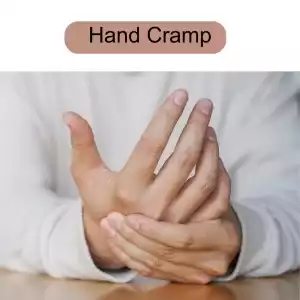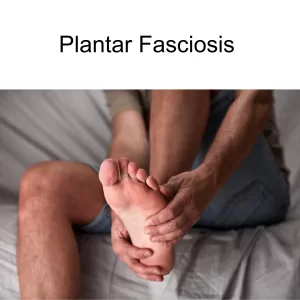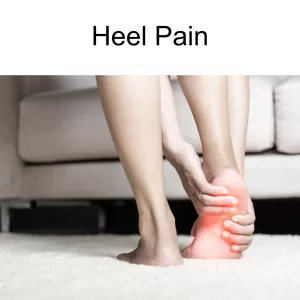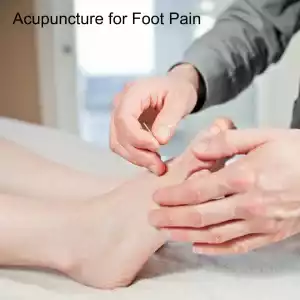By Qineng Tan, L.Ac., Ph.D and Xiaomei Cai, L.Ac., Ph.D.

Writer’s cramp? Foot cramps and spasms in your calf muscles? Cramps that cause your toes to curl up or big toe to stick up? These are signs of dystonia, a disorder that causes muscles to contract, causing painful spasms and uncontrollable twisting of body parts. Acupuncture can help relieve symptoms of dystonia and reduce cramping.
Dystonia is a movement disorder that can affect one part of the body, such as the hand, or several parts of the body, causing painful cramping and involuntary muscle contractions.
Dystonia most often affects the hands, feet, and neck (cervical dystonia or neck dystonia). When the cramping only happens in one area, this is known as focal dystonia, i.e. focal dystonia hand, or focal hand dystonia.
Acupuncture can help relieve symptoms of dystonia without injections or surgery.
Top 5 Kinds of Dystonia
Dystonia muscle cramping and spasming can happen in various parts of the body, including:
- Neck (Cervical Dystonia) – spasm pulls the head to one side forward or backward.
- Hand – usually triggered by a certain activity, like writing, playing an instrument, or playing golf.
- Jaw – (Oromandibular Dystonia) – causes trouble with chewing, swallowing or drooling, can happen concurrently with cervical dystonia.
- Eyelids (Blepharospasm) – spasms cause the eyelids to close, can also feel like dry eyes, sensitivity to light. Can be triggered by light, screens, and stress.
- Vocal Cords (Laryngeal Dystonia) – strained voice, only able to speak in a whisper.
For some people, dystonia does not cause pain, while for others, it can become increasingly painful. In some cases, dystonia may plateau; in others, it gets progressively more severe.
Over time, some types of dystonia can lead to the deterioration of joints and arthritis.
What Causes Dystonia?

Medical science is not entirely clear on the specific causes of dystonia. There may be some genetic predisposition for dystonia. Some types of dystonia show up without any seeming correlation to other issues (primary dystonia). Other kinds of dystonia manifest as symptoms of another disorder affecting the nervous system.
Muscle spasms can be a symptom of several different disorders, including:
- Huntington’s disease
- Parkinson’s disease
- Stroke
- Brain injury or brain tumor
- Encephalitis
- Tuberculosis
- Carbon monoxide poisoning or heavy metal poisoning
Some types of dystonia can be brought on by a specific physical activity. Mental, emotional, and physical stress can also trigger an episode of dystonia cramping.
Some studies have suggested that there is a problem with motor programming, or a deficiency in the motor cortical network of the nervous system.
Treatment for Dystonia
The most common form of treatment for focal dystonia, such as the kind that causes “writer’s cramp,” is botulinum neurotoxin (BNT or Botox) injections. This is a localized treatment that helps relieve symptoms by blocking the release of chemicals involved in muscular contractions.
Patients feel their muscles relax within a few days or a week. The results of this treatment typically only last for a few months, and then another injection is needed.
Deep brain stimulation (DBS) is a surgical method used to treat dystonia. This involves the implantation of a stimulator that is somewhat like a pacemaker; it is controlled remotely and stimulates parts of the brain that affect muscular contractions.
Acupuncture can be a good alternative treatment modality for reducing the muscle spasms associated with dystonia.
Can Acupuncture Help Dystonia?

TCM theory views most health issues as being related to internal or external pathogenic forces causing imbalance within the organ systems. Organ systems in TCM are interrelated in ways that may seem counterintuitive from the “Western medicine” point of view. For example, in TCM, the actions of the muscles and tendons are related to the liver system.
Pathogenic forces like wind, damp, and heat can arise or attack the organ systems and cause problems. In the case of dystonia, excess wind in the liver affects the tendons and muscles, causing them to be overactivated.
In some cases, dystonia is triggered by emotional stress. If a patient is experiencing anxiety or depression, then that is also a factor that needs to be addressed.
Thus, the acupuncturist will create a treatment protocol designed to use different TCM modalities to address the root cause of the problem and the symptoms. Acupuncture to treat dystonia will address the liver wind and also be used to help relax the muscles. Treatment can also focus on relieving stress and balancing the person’s emotional state.
Acupuncture treatment is often used to help stimulate muscle tone. In cases of dystonia, we will use acupoints on the meridians related to the affected muscles as a way of both suppressing muscle tone and activating it. Some of the muscles related to the area that is cramping up might be hypertonic (tight and rigid), while others might be hypotonic (not active or offering resistance).
One study that looked at acupuncture treatment for cervical dystonia used electromyogram to measure muscle activity, and it showed that shallow placement of acupuncture needles decreased excess activity in the muscles.
Another study looked at patients who had been receiving Botox treatment for their cervical dystonia. They then received a series of 6 sessions of acupuncture treatment. All of the patients reported improvement and two-thirds of the patients intended to continue acupuncture treatments for management of their condition.
Gua sha and other forms of Chinese massage can also be used to help with dystonia.
Moxibustion or moxa, which is a warming herb that is burned near the affected area, can also be helpful to relieve cramping.
Acupuncture Near Me for Dystonia
Dystonia can be a serious disruption to your daily life and activities, making you feel out of control in your body. In some cases, dystonia causes serious pain. If you have been experiencing severe muscle cramping in specific areas, please do not hesitate to reach out to us at Art of Wellness for help. Drs. Tan and Cai have over 35 years of experience helping to treat conditions of all kinds that affect the nervous system and cause musculoskeletal problems.
*This article is for education from the perspective of Traditional Chinese Medicine only. The education provided by this article is not approved by FDA to diagnose, prevent, treat and cure human diseases. It should not stop you from consulting with your physician for your medical conditions. Traditional Chinese Medicine is based on Qi, which is an invisible force that usually cannot be observed by modern science. Because science focuses on testing ideas about the natural world with evidence obtained through observation, these aspects of acupuncture can’t be studied by science. Therefore acupuncture and Chinese herbs are often not supported by double-blind, randomized trials, and they are considered alternative medicine therapies in the United States.











